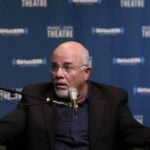From a seller’s perspective, the only way to describe the current housing market in the U.S. is lousy. A typical home sits on the market for 40 days on average it’s sold.
With an estimated 500,000 more sellers than buyers, Redfin reports that home listings are sitting at a five-year high.
Don’t miss
- Thanks to Jeff Bezos, you can now become a landlord for as little as $100 — and no, you don’t have to deal with tenants or fix freezers. Here’s how
- I’m 49 years old and have nothing saved for retirement — what should I do? Don’t panic. Here are 6 of the easiest ways you can catch up (and fast)
- Robert Kiyosaki warns of a ‘Greater Depression’ coming to the US — with millions of Americans going poor. But he says these 2 ‘easy-money’ assets will bring in ‘great wealth’. How to get in now
Simply put, this is a buyer’s market. Home sellers need to go the extra mile to get the best price.
Here are the top eight ‘buyer repellants’ to avoid if you’re trying to sell your home in 2025.
Clutter
Buying a home is an emotional process and you don’t want buyers’ first reaction to be one of disgust. A dirty, cluttered home makes it difficult for them to picture themselves in your property, which ultimately makes it difficult to sell.
Consider hiring professionals to clean and organize your space before you put it on the market.
Read more: Want an extra $1,300,000 when you retire? Dave Ramsey says this 7-step plan ‘works every single time’ to kill debt, get rich in America — and that ‘anyone’ can do it
Personal decor
Potential buyers need to visualize their own lives in your space. This isn’t possible when your walls are covered with deeply personal pictures of you and your family.
“The first thing I would do is depersonalize and remove personal photos,” celebrity real estate agent Ryan Serhant advised on an episode of The Rachael Ray Show.
“Your buyer will walk through, they’ll forget to pay attention to the house. They’ll just want to know who lives here. They’re super nosy.”
Unfixed damage
Given how pricey homes are to begin with these days, most buyers are exceptionally sensitive to any additional costs involved with buying your home. A potential buyer is likely to notice everything that needs to be fixed and use it to negotiate a lower price.
This doesn’t mean your home needs expensive renovations. Clever Real Estate recommends that sellers focus on repairs with the highest return on investment, such as garage doors, front doors and minor kitchen remodels or updates.
Dirty carpets or broken floors
Potential buyers can be put off by dirty carpets and broken floors. Fortunately, fixing this is relatively inexpensive. According to Angie’s List, the average cost to repair a carpet is $207. This quick fix can go a long way in your staging process.
Pets
Pet owners might appreciate signs that your home is big and comfortable enough for a pet, but not every prospective buyer fits this description. Some don’t like cats and dogs or have allergies.
Serhant advises putting away your pet’s food bowls and “if you have a 65-pound dog, maybe take the dog for a little walk so your person can come in and not see it without any kind of prejudice or allergies,” he added.
Overpowering scents
It’s tempting to make your home smell welcoming and pleasant, but it’s difficult to know if your potential buyers are sensitive to any odors. The safest option is to aim for a mild or neutral scent that doesn’t distract the viewer.
Excess furniture
Most home listings don’t include the furniture, so minimizing the number of items you leave behind in your listing is probably a good idea. You can work with a professional stager to rearrange or move furniture to make it more appealing for viewers.
Bold paint colors
Just like personal photos, bold and vivid colors are a reflection of your personality and are likely to be distracting for any potential buyer. White is a safer option.
“You want to project like an open canvas,” Serhant says. “You want your buyer to walk through and imagine themselves living there, and you want them to say, ‘Oh, I love these white walls, I could see how my own Star Wars-themed wall would look here.’"
What to read next
- You don’t have to be a millionaire to gain access to this $1B private real estate fund. In fact, you can get started with as little as $10 — here’s how
- Here are 5 ‘must have’ items that Americans (almost) always overpay for — and very quickly regret. How many are hurting you?
- Accredited investors can now buy into this $22 trillion asset class once reserved for elites – and become the landlord of Walmart, Whole Foods or Kroger without lifting a finger. Here’s how
- Rich, young Americans are ditching the stormy stock market — here are the alternative assets they’re banking on instead
Stay in the know. Join 200,000+ readers and get the best of Moneywise sent straight to your inbox every week for free. Subscribe now.
This article provides information only and should not be construed as advice. It is provided without warranty of any kind.









